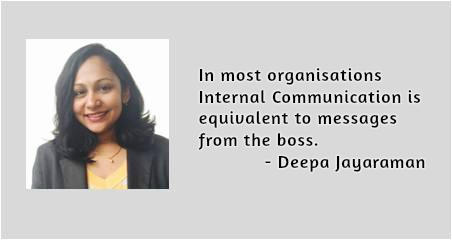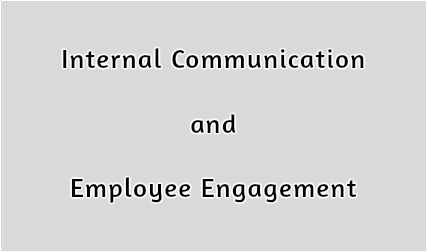Internal Communications (IC) and Employee Engagement (EE), once considered redundant, have today gained immense importance. But have they really come of age?
 The term ‘coming of age’ used in the context of communication, is work-in-progress with the advent of social media. In most organisations, IC is the equivalent to ‘word from the top’ and most employee engagement tools sell ‘corporate messages from the boss’. IC departments create and distribute content, mostly through email and intranets, which have replaced newsletters and magazines. There is lots of sending, little or no listening. The result: a wide gap between the corporate story and workplace reality.
The term ‘coming of age’ used in the context of communication, is work-in-progress with the advent of social media. In most organisations, IC is the equivalent to ‘word from the top’ and most employee engagement tools sell ‘corporate messages from the boss’. IC departments create and distribute content, mostly through email and intranets, which have replaced newsletters and magazines. There is lots of sending, little or no listening. The result: a wide gap between the corporate story and workplace reality.
It’s important for a dedicated IC function to report news and relay information to employees, but reporting alone is not enough. Everything about business is changing; so is the way people get, share and use information inside the workplace. Employee communication departments need to recognise realities of the modern workplace and reinvent themselves.
As more millennials enter the workforce, the need for multi-channel access will continue to grow. ‘Omni-channel’ is a popular buzzword in the external marketing community; it is just as important in the IC arena. Companies can engage them through multiple channels, including apps, SMS, push notification tools and social media.
The ‘audience’ is important in an external content marketing strategy. It’s no different when your audience is your employees. With external audiences, we tend to innovate to engage – through videos, mobile, image messaging, pictures, infographics, blogs, podcasts, whitepapers, reports. We need to do the same in IC.
 IC & EE initiatives, have certainly evolved into an extremely important tool in people management — the key to a successful organisation. This evolution can be attributed to the ever-changing dynamics of communications that has changed both externally but more importantly, internally.
IC & EE initiatives, have certainly evolved into an extremely important tool in people management — the key to a successful organisation. This evolution can be attributed to the ever-changing dynamics of communications that has changed both externally but more importantly, internally.
Today, organisations have no qualms in forming communities or groups on social networking sites or IoTs (Internet of Things) such as Facebook and WhatsApp. From communicating necessary information, celebrating employee success stories to addressing employee concerns, social media has definitely changed the way internal communication functions. It not only promotes equal and free-flowing information but also lays down a two-way communication process.
Recently, Whatsapp was used in our organisation for crisis communications. There was wrong reportage in a leading business daily about our CEO quitting for better opportunities. We quickly negated the news, and our employees shared our social media post. Generating incredible word-of-mouth, this turned adversity into an opportunity!
Employee engagement initiatives have gained immense popularity in the new millennium. From office retreats to incentive trips, companies are coming up with new ways of engaging with their employees informally – be it Snapdeal that had stand-up comedian in its Gurgaon office to entertain its employees or YES Bank launching “Facebook at work”. But, this is just the beginning. IC & EE has only reached the first level, and it is bound to evolve in the future as well!






Be the first to comment on "Have IC and EE really come of age?"